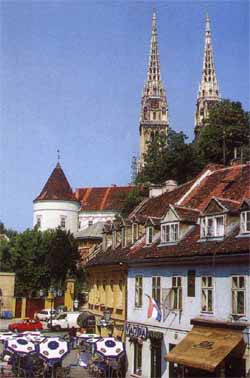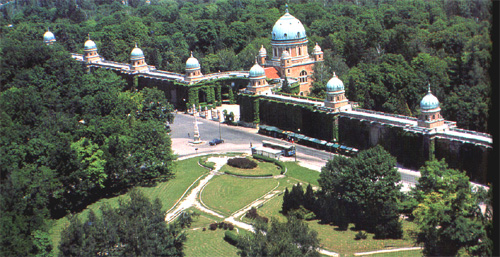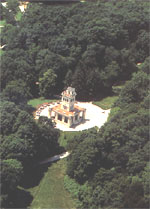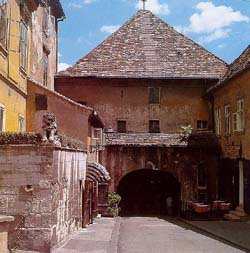
Tkalciceva
Street - Zagreb
The
very popular place for young people to gather & an ideal place for
lunch or coffee brake. During the night a great number of night-clubs and
discos are open until the small hours. |
 |
 |
 |
 |
 |
 |
 |
 |
 |
 |
 |
 |

The
World Factbook is book in the public domain, prepared by the Central Intelligence
Agency (CIA) for the use of US Government officials, and coverage, format,
style, and content are designed to meet their specific requirements.
uAppendixes
uReference
Maps
uNotes
and Definitions
uCountry
Profiles
uFlags
of the World
uRank
Order Pages |
 |
|
|
|
Zagreb-Traditional
Folklore Review
|
 |
 |
 |
 |
|
 |
Beautiful Zagreb


|
Beautiful Zagreb,
the Croatian capital is an old Central European city and the largest city
in Croatia (1,000,000 inhabitants). Zagreb lies at the bottom of Mount
Medvednica (Zagrebacka Gora - 1035 m), and along the banks of the River
Sava. For centuries Zagreb
has been a focal point of culture and science, and now this charming city
is the hub of the business, academic, cultural, artistic and sporting worlds
in Croatia. A large city today, Zagreb owes most of its beauty and charm
to the periods of Baroque, Classicism and Secession when its population
was less than one tenth of what it is today. With a population close to
a million and rapid development, it has retained the individuality of its
charm, hospitality and a relaxed feeling that makes it genuinely a city
on a human scale.
Zagreb offers numerous museums,
theaters, art galleries, churches, parks, gardens, picturesque markets,
fairs, diverse shopping facilities, an abundant selection of quality craft
products, coffee shops, restaurants, clubs, pubs, beautiful squares, boutiques,
and a vernacular cuisine on every corner. |

Zagreb
is a popular choice for conventions, congresses and gala events. Its proximity
to the major European cities, high quality hotels (22 hotels of all categories),
many motels and pensions, wide choice of modern, well equiped ancillary
facilities, variety of cultural life and entertainment, a pleasant climate,
gourmet dinning and excellent wine have put Zagreb among the very top convention
destinations.
Dating back to 1925, The Regent
Esplanade Zagreb is one of the most famous and gracious buildings in Zagreb.
The hotel has a long and distinguished history and is famed for its impeccably
high standards of service. The Regent Esplanade Zagreb has been at the
heart of Zagreb's social life since the day it opened and can count presidents,
politicians, film and music stars among its many distinguished guests. |

|

|
| As in all great cities,
the squares and streets of Zagreb are an outdoor theater. Some of the most
attractive events are the traditional Folklore Review, the Zagreb Summer
Festival and the Flora Art flower show. Street entertainers are putting
on their own festival, there are also the Hot Air Balloon Festival, the
Portugizac Wine Festival and New Year's Eve on Ban Jelacic Square. |

|
 Zagreb
Fair (Zagrebacki Velesajam) - 505.000 m2, from witch 180.000 m2
closed exhibition space. The first large international exhibition was held
in 1864 in Zagreb. It is no accident that Zagreb Fair has developed over
many years to become the leading fair in this part of Europe and the eleventh
largest fair in the world. Zagreb Fair is one of the founder-member of
the Union of International Fairs (UFI) in 1925. Zagreb
Fair (Zagrebacki Velesajam) - 505.000 m2, from witch 180.000 m2
closed exhibition space. The first large international exhibition was held
in 1864 in Zagreb. It is no accident that Zagreb Fair has developed over
many years to become the leading fair in this part of Europe and the eleventh
largest fair in the world. Zagreb Fair is one of the founder-member of
the Union of International Fairs (UFI) in 1925. |

|


|

|

The Cathedral
is the most famous building in Zagreb. It is dedicated to the Holy Virgin's
Ascension and to St. Stephen and St. Ladislaus and it is the largest ecclesiastical
building in Croatia. It was built between the 13th and 18th centuries in
the Romanesque style.
At the end of the 15th
century Zagreb Cathedral became the most eastern cathedral of the West.
It was a period of fortification. Cylindrical Renaissance towers were erected.
Unfortunately, the most beautiful Bakac Tower was razed at the beginning
of the 20th century. Today five round towers and one square tower still
exist as part of the Archbishop's Palace.
After the earthquake damage
of 1880, a Neo-Gothic basilica was built. In the cathedral lies a rich
treasury of artistic items and the tombs of many of the greatest figures
in Croatian history. |

|

|

|


|
Cemetery
Mirogoj (Groblje Mirogoj) - A unique composition of impressive arcade
architecture, artistically shaped graves and park-like greenery, is among
the most beautiful last resting places in Europe. Cemetery Mirogoj was
founded in 1876 on the property of Ljudevit Gaj, leader of the Croatian
national revival, and substituted eight local active cemeteries at that
time. It was projected by architect Herman Bollé (1845-1926), a
descended from a family of German architects who lived in Croatia for half
a century and had a big impact in Zagreb with his works, especially with
the reconstruction of the Cathedral and the construction of the magnificent
Mirogoj Arcades (1917). |

|

| Park Maksimir
is the biggest and most beautiful park of South East Europe and Zagreb's
largest and most beautiful park. It is also a cultural and historic monument
covering 316 hectares commissioned by Bishop Maksimilijan Vrhovec. This
beautiful park was laid out in 1784 and is graced by an old oak forest,
sunny open spaces, and romantic lakes. Originally intended to be a park
in the French tradition, it was completed in 1843 under Bishop Juraj Haulik
as a typical English landscape park. The park has several artificial lakes
and one houses the Zagreb Zoo, which has the largest number of animals
in Croatia. A long avenue leads to the central area of the park and a hillock
where one finds a belvedere built in 1843. The Park Maksimir is also rich
in other garden architecture dating from the 18th and 19th centuries. Click
on the image to see bigger picture. |

|

|
| THE
RICH HISTORY OF ZAGREB |
| Today's Zagreb has grown
out of two medieval settlements Kaptol and Gradec that developed on neighboring
hills. Ecclesiastical Kaptol and burgher Gradec often found themselves
in conflict. Both settlements were surrounded by high walls and towers,
remains of which are still preserved. The first written mention of the
city dates from 1094, when a diocese was found on Kaptol. During the Turkish
onslaughts on Europe between the 14th and 18th centuries, Zagreb become
an important border fortress. The Baroque reconstruction of the city in
the 17th and 18th centuries changed the appearance of both Gradec and Kaptol. |

 |
The Funicular
built in 1888 is an attractive way of getting from the Lower City to the
Upper City (Gornji Grad). The old city Tower Lotrscak, derives from the
12th century. From the top, a canon is fired every day precisely at noon. |

|
The Stone
Gate - one of the city's preserved medieval gates, dates from the 13th
century. It has often been rebuilt. Today it houses the Chapel of Our Lady
of the Stone Gate, patron saint of the city. |

|

|
|
|

|
 |
|
|
|

|
St. Mark's Church is the old
Zagreb parish church. It dates from the 13th century and this claim is
supported by the fact that a Romanesque window had been discovered at the
southern facade as well as a blueprint of the chapel of St. Mark. Its interesting
coloured roof was added in 1880.
The most valuable side of St.
Mark's church is its southern portal, believed to have been constructed
by the Parler family from Prague (19th century). The Gothic composition
of the portal is made up of 15 statues placed in 11 shallow niches. At
the very top are Christ and Mary with little Jesus, while underneath stands
St. Mark with the lama. At the side there are the 12 Apostles ( four wooden
statues had replaced the originals). Its artistic value and the number
of statues makes it one of the most valuable Gothic portals in south-eastern
Europe. |
 |

|
 |

|
 |

|
 |

If
you are frustrated by slow, costly, ineffective advertising methods that
used to work, welcome to what works now!
Attract
new clients with special promotions and features on the Net!
|
 |








